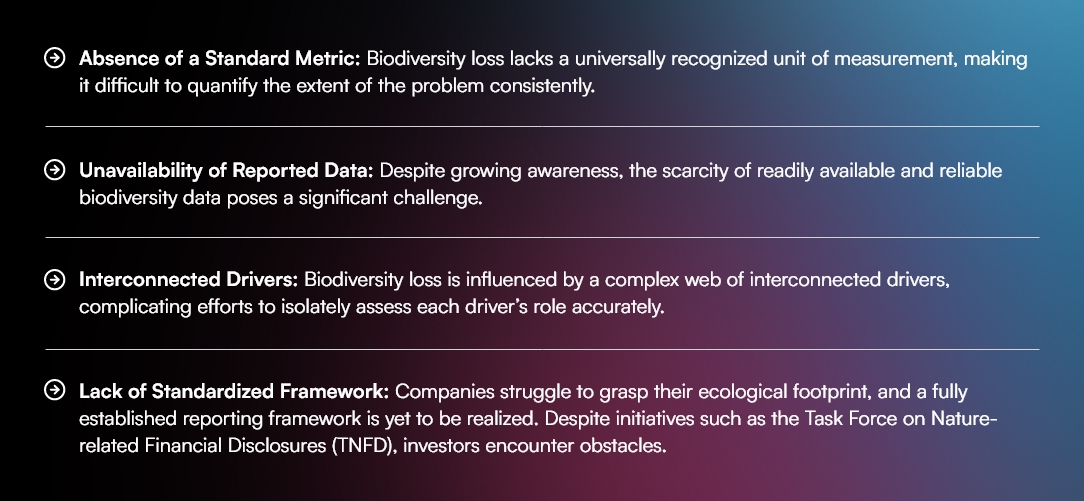“Biological diversity means the variability among living organisms from all sources, including inter alia, terrestrial, marine, and other aquatic ecosystems and the ecological complexes of which they are part; this includes diversity within species, between species, and of ecosystems.”
United Nations Convention on Biological Diversity (CBD)
Biodiversity Loss Is One of the Most Pressing Global Challenges of Today
Biodiversity provides for healthy and resilient ecosystems with a wide range of “nature’s contributions to people,” such as clean air and water, raw materials, soil fertility, protection against flooding and erosion, and climate regulation. Since the 1970s, biodiversity worldwide has changed rapidly at an alarming rate. Today, 25% of the world’s species are endangered and around one million species are on the brink of extinction (IPBES 2019). According to the World Economic Forum (2024), biodiversity loss and ecosystem collapse rank third of the top 10 global risks by severity for the next 10 years.
Role of the Financial Sector in Biodiversity Conservation
The financial sector’s connection to biodiversity is profound. As nature approaches a pivotal moment, businesses and investors increasingly understand the need to address nature alongside climate change as systemic challenges. This realization has led to calls for the widespread establishment and execution of a nature-positive economy. Consequently, investors and financial institutions are urged to prioritize long-term sustainability over immediate financial gains. Furthermore, the financial sector has a critical role to play in supporting companies to achieve a more positive impact on nature.
Challenges in Integrating Biodiversity into Financial Decision-Making
Incorporation of biodiversity considerations into decision-making processes is crucial for the financial sector to effectively mitigate the associated risks while identifying opportunities within sectors. However, integrating biodiversity considerations into financial decision-making presents a unique challenge.

Beyond Reported Data: Integrating Biodiversity in ESG Evaluation
When considering biodiversity, investors must move beyond reported data to effectively integrate it into their investment strategies. Recognizing that biodiversity has historically received less attention in ESG evaluations, at Inrate, we decided to address this by explicitly incorporating biodiversity into our Impact Matrix to ensure its accurate reflection in our ESG impact ratings. While factors such as pollution, land use, and climate change are already acknowledged as negative influences in our ESG Impact Rating, the recent increase in discussions about biodiversity loss prompted us to review our approach. This effort involved not only identifying indicators directly linked to biodiversity but also ensuring that existing indicators indirectly affecting biodiversity were properly classified and considered.
Contributor

Judith Reutimann
Co-Head of Research

